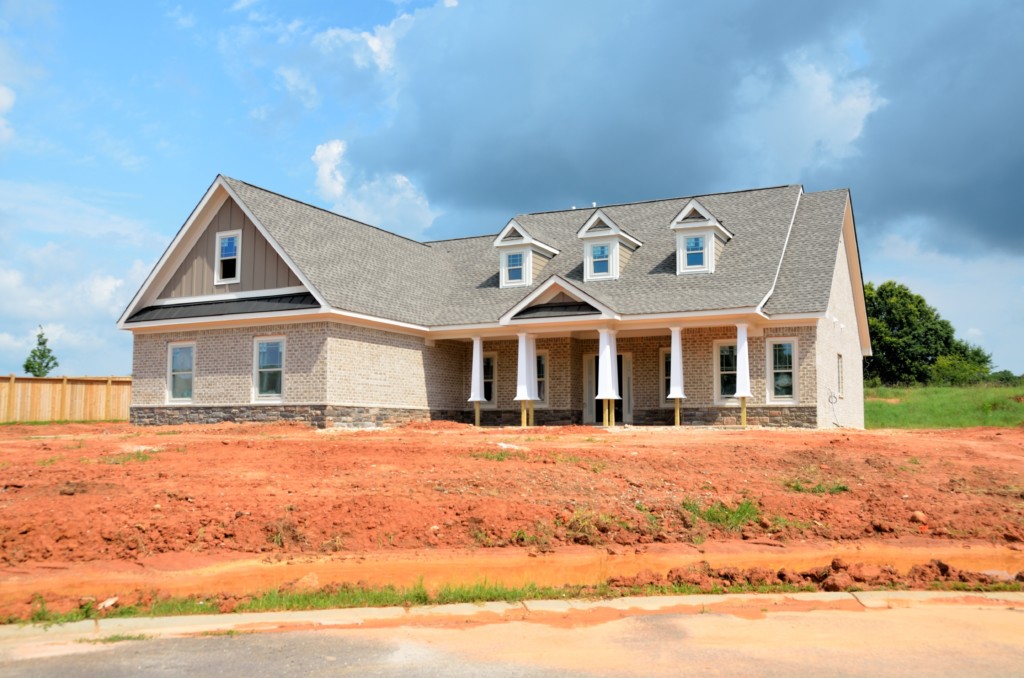You are viewing our site as an Agent, Switch Your View:
Agent | Broker Reset Filters to Default Back to List2021 Housing Inventories: Will They Run Out?
January 20 2021
 After months of record lows last year, 2021 housing inventories are under the microscope. In real estate terms, normal market conditions see about six months' worth of homes listed for sale at any given time. That means that at the current sales pace, it would take six months to sell all of the resale houses currently on the market.
After months of record lows last year, 2021 housing inventories are under the microscope. In real estate terms, normal market conditions see about six months' worth of homes listed for sale at any given time. That means that at the current sales pace, it would take six months to sell all of the resale houses currently on the market.
But, as we all know, these are not normal times.
Current Highs and Lows of 2021 Housing Inventories
Nationally, the inventory of unsold houses rests at an historic low of 2.3 months, according to the National Association of Realtors. That doesn't tell the whole story, though; after all, real estate is a local enterprise, that differs across locations.
Of the 80 metropolitan areas tracked by NAR, the market with the greatest inventory – Duchess and Putnam Counties in New York – has 6.6 months' worth of houses as of the third quarter of 2020. But the market with lowest inventory – Austin, Texas – has just 0.7 months' worth. In other words, at the rate houses are selling there, everything offered for sale in the Texas capital would be gone in less than 30 days. Yikes!
Realistically, running out of houses to buy isn't likely. Owners are always putting their homes up for sale, so inventory is constantly being replenished. It's just that in the hottest of hot markets, shelves aren't being refilled fast enough, and look quite bare compared to others.
(READ MORE: A Hot Housing Market Expected to Continue Through the Spring of 2021)
2021 Housing Inventories from Coast to Coast
A glance across the country echoes this sentiment; the San Francisco Bay Area currently has 2,400 listings of houses for sale, three times as many as were on the market last March. Unfortunately, most are condominiums, which are remaining on the market much longer, even with price reductions. Conversely, "single-family houses with a yard and more space are sold very quickly, in most cases with multiple bids well over the asking price," says Walt Baczkowski of the San Francisco Association of Realtors.
On the other side of the country, Brian Donnellan of Bright MLS, the multiple listing service for six Mid-Atlantic states, says "we don't see a scenario where we run out of inventory. The market has a remarkable way of balancing itself. When inventory is this low, and prices are this high, buyers take more time considering their decisions."
But in the Northern Virginia region, shelves have been all but bare for a year. At year-end 2020, the Northern Virginia Board of Realtors counted the months' supply of houses for sale at 0.88, down from 0.95 year over year. Some 22,400 properties in the NVBR footprint – Fairfax and Arlington counties, the cities of Alexandria, Fairfax and Falls Church – changed hands last year at an average price of $670,400. But as of January 7, there were just 1,723 active listings from which buyers could choose.
The situation's the same in Mid-America. The inventory in the nine-county Chicago metro area "will be tight throughout the first part of the year – and perhaps beyond," says Jon Broadbrooks of Midwest Real Estate Data, which operates the region's MLS. "But that does not mean it will be at zero."

As of December, there was only a 2.6 months' supply among all types of housing in the region. But it was just about half that for single-family detached properties. "December is always a tighter month, inventory wise," Broadbrooks explains, because many sellers pull their houses off the market for the holidays.
Combine that cyclical tendency with the unusually strong demand for housing and the result is "some of the lowest inventory numbers recorded in MRED's 12 years of existence," Broadbrooks says.
But Broadbrooks sees relief on the way for 2021 housing inventories, if only because sellers "will be motivated" to cash in on rising prices. "More properties will enter the market in the spring, as they always do," he offers. "The typical cycle is that as we get into March and April, consumers re-emerge with the market and more properties are listed."
Meanwhile, of the 80 markets with the lowest inventory in last year's third quarter, Austin, with the aforementioned 0.7 months' worth, is the tightest. But not by much, NAR's numbers show. Following close behind:
- San Diego at 0.9 months
- Tampa-St. Petersburg at 1.1 months
- Wichita, Kansas at 1.1 months
- Anaheim-Santa Ana, California at 1.2 months
On the flip side, Duchess and Putnam County, N.Y., market has 6.6 months' supply of places for sale as of last count, followed in descending order by:
- Binghamton, New York – 5.5 months
- New York City metro area – 5.3 months
- Farmington, New Mexico – 4.7 months
- Pittsfield, Massachusetts – 4.4
- Miami-Ft. Lauderdale-West Palm Beach, Florida – 4.2
New Home Builds Provide Some Relief
Some relief will come from the new home sector, where builders are working tirelessly to meet demand. However, new homes are sold so far out in front of construction that builders are purposely slowing sales and/or raising prices. "Can't build them fast enough," says Robert Dietz, chief economist at the National Association of Home Builders.

In fact, new home sales are outpacing the start of construction by the widest margin ever. Dietz reports, "The gap is unprecedented…There is no comparable period in the data going back to 1963." That leaves the inventory of complete-but-unsold houses at a dangerous, near-record low 43,000 nationwide, or about 4 months' worth.
Meanwhile, two-thirds of the 18,000 subdivisions tracked by Zonda, a new construction-centric research and advisory firm, have hiked their prices. Still, the buyers keep coming. Traffic is at record levels, says Zonda's Tim Sullivan. "Wait lists are back!"
But run out of houses for sale? Nah. As American author of self-help books Robert Collier once wrote: "Supply always comes on the heels of demand."
(READ MORE: The Pros and Cons of Building a Home in Today's Market)
What the Experts are Saying About Low Inventories
"Figuratively," says Lawrence Yun, NAR's chief economist, it's possible to say we are running out of houses for sale, just as a grocery store owner would say things are sold out when seeing a thinning of items on the shelf. But "literally," he says, "there will always be a home for sale." Even without a for sale sign out front, Yun points out, "some owners will always take the offer if the price is high enough."
While there may be a severe shortage in some places, agrees Odeta Kushi, deputy chief economist at title company First American, the fact that buyers are scrambling to outbid one another for decent properties is "likely to spur (other) owners to list their homes for sale."
"As a vaccine successfully rolls out and the economy improves," Kushi says, "existing homeowners who were hesitant to sell amidst the worst of the pandemic will be encouraged to use the equity they've built up in their homes to move out and move up."
The Bottom Line
While it seems the consensus is that we won't run out of homes for sale, it's still crucial to note that inventory isn't likely to be replenished soon – or quickly, according to a survey of 1,000 or so realty agents by HomeLight, an agent-matching service. Most believe the shortage of places to buy will have a bigger influence on the market than the change in presidents. While 37% of the respondents said the supply will increase over time, 54% predicted it will either remain the same or even decline in the first stretch of 2021. With sentiments scattered, it seems that the best anyone can say right now is that the markets are low, but they're not running on empty.
Lew Sichelman is a syndicated newspaper columnist, and has been covering the housing market and all it entails for more than 50 years. He is an award-winning journalist who worked at two major Washington, D.C. newspapers and is a past president of the National Association of Real Estate Editors.
To view the original article, visit the Homes.com blog.









